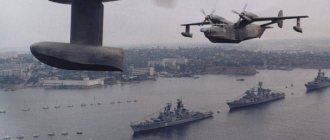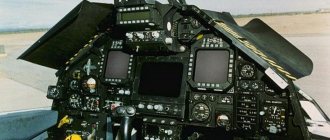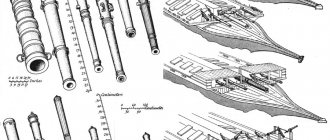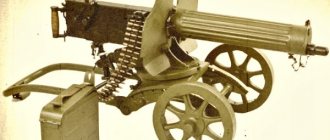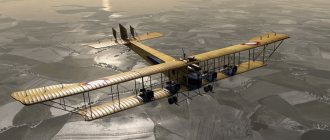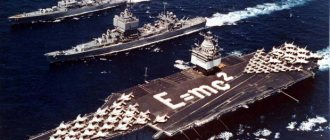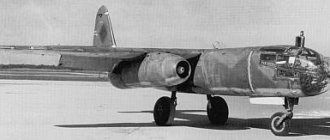At one time, not so distant, this outlandish flying machine was top secret, only a few knew about it. It was created by an aircraft designer who was also unusual in all respects, from his biography to the aircraft he designed. We are talking about Robert Ludwigovich Bartini and “Snake Gorynych,” as one of his amazing cars was nicknamed. It is noteworthy that Bartini was not only an outstanding designer and scientist, but also the secret mastermind of the Soviet space program. Sergei Pavlovich Korolev called him his teacher.
Youth
The very birth of the future genius of Soviet aviation was surrounded by secrets and mysteries. According to Bartini himself, Baron di Bartini adopted him, but at the same time he was his biological father.
Despite the fact that the real birth story and true biological parents have never been established, it is generally accepted that Roberto Bartini was the sole heir to a huge fortune. Which turned out to be absolutely unnecessary for him and he preferred to become a simple worker and was sincerely happy to move to the USSR.
The young genius Robert Bartini grew up in a very rich Italian family, they could afford their child almost everything and no one suspected that the young talent would prefer science to all the privileges of wealth and success.
From an early age, the boy preferred to spend time in the library; he was so gifted that in a few weeks he was able to learn German, only to read Jules Verne’s translated book “20,000 Leagues Under the Sea.” As he grew older, Roberto Bartini learned to speak 7 languages fluently.
Sport was another passion of the young genius, he enjoyed fencing, playing football and swimming, this captured Roberto so much that he began to take prizes in all these sports, and as he grew older he even thought about becoming a professional athlete . But fate prepared for him a completely different future.
At the age of 13, Roberto Oros di Bartini became interested in history and philosophy, which prompted him to the idea of creating a family tree of his ancestry, but here’s the strange thing - he started the branch from the moment of the creation of the Earth.
This confused the boy and as a result, his father stopped all of Roberto's attempts in history. But he failed to take away his natural craving for science.
As he grew older, Roberto began to show a penchant for exact sciences, such as physics and mathematics, but languages remained his weakness.
In addition to the sciences already mentioned, he mastered the skill of mirror writing - imitating Leonardo da Vinci, the boy learned to write synchronously with both his right and left hands, in response to the surprised exclamations of those around him, assuring everyone that they could do it too.
As arguments for his beliefs, he gave an example of the ability of people to move both hands simultaneously.
Oddities of this kind not only did not disappear over the years, but only increased. For example, as Baron Bartini's academic knowledge increased, he developed the characteristic of lacking feelings of hunger and thirst.
As a rule, he ate strictly according to the clock (unless, of course, he forgot to look at the time) and, as it turned out later, he quenched his thirst also strictly according to time.
Moving to the USSR
R.L. Bartini is shrouded in mysteries and unsolved secrets. In his youth, he served as a lieutenant in the Austro-Hungarian army, and was sentenced to death for the murder of a senior officer, but fate turned out to be such that he was captured by the USSR army, after which he was redirected to the Far East.
It was there that he was captured by the ideas of communism.
Upon returning to his homeland, R.L. Bartini took an active part in the elimination of the White Guard Boris Savinkov, who was part of a terrorist group and planned to assassinate Lenin if he visited Genoa.
In the same 1922, on the orders of Mussolini, Bartini was supposed to be executed, but he escaped from prison, after which his path was aimed at the USSR. There are several differing opinions about how exactly he got into the Soviet Union.
Some hypothesize that he got to the country of the Soviets by plane, others that he used a boat for scuba diving. From 1922 to 1925 he was met in Ceylon, China, Germany and Austria. He finally settled on the territory of the Soviet Union only at the end of 1925.
The beginning of his dizzying career was working as a simple laboratory assistant-photographer at the Khodynka airfield, after which an intelligent and talented young man began his rapid advancement to the pinnacle of success.
In 1927, R.L. Bartini, became a member of the scientific and technical committee of the USSR Air Force. But he did not like the position of an official and he was sent to OPO-3, the most important aircraft manufacturing company of those years.
This began a series of developments that exploded the scientific abilities of mankind at that time and made the USSR one of the leading powers regarding military weapons. Led by Bartini, Soviet scientists were able to develop a series of unique seaplanes:
- Flight cruiser MK-1;
- MBR-2 for short-range reconnaissance;
- MDR-3 for long-range reconnaissance.
He was one of the technicians who contributed to the implementation of the TB-1 “Country of Soviets” flight on the Moscow-New York flight.
His creations were much greater than the capabilities that were available at that time. For example, one of his most incredible projects is an invisible plane, this idea was tested and implemented in 1935.
The developments and ideas of the brilliant designer were at least 100 years ahead of their time.
Rhodoid is organic glass, which was used by Robert Bartini to create an invisible aircraft.
To create the effect of invisibility, the plane was equipped with a special device that sprayed a bluish-gray gas. When sprayed, the rhodoid began to take on the appearance of the sky.
According to eyewitnesses, after the engines started, blue smoke began to come out of the exhaust ports, after which the plane disappeared from visibility. All that remained was the noise of the engines, which moved away and after some time landed on the ground again.
In 1935, Robert Lyudvigovich became the chief designer of the USSR Scientific Research Institute, where, based on his developments, the Stal-7 aircraft was created - a 12-seater passenger aircraft.
One of the very first aircraft projects that was successfully implemented. And during the Great Patriotic War, the Steel-7 was transformed into the EP-2 military bomber.
As the military leadership of the Soviet Union noted, the ER-2 made a significant contribution to the overall victory, because at that time it was the only machine that had the necessary power to fly long distances.
R.L. Bartini developed several incredible ideas for building airplanes, but they never saw life, since they were too revolutionary for that time, because there was no necessary equipment and materials for their manufacture.
Only 12 years later, with great difficulty, the United States was able to bring to life one of the ideas of the great designer - “Valkyrie”.
It’s sad, but one of the smartest people of that time was convicted of betraying the Motherland and in 1938, the Troika sentenced him to 15 years in prison.
Stealth plane
In the magazine “Inventor and Innovator” for 1936, journalist I. Vishnyakov spoke about an airplane made of organic glass - rhodoid, which was covered with amalgam on the inside. Bartini equipped the machine with a device for spraying a bluish gas. This turned out to be sufficient to provide the airplane with camouflage against the background of a clear sky.
“The unusualness of that car was already evident at the moment when the engine was started,” wrote I. Vishnyakov. — The usual commands and answers were heard: “From the screw! There is from the screw! Then everyone saw a thick bluish exhaust from the side openings. At the same time, the rotation of the propellers sharply accelerated, and the plane began to disappear from sight. It seemed as if he was disappearing into thin air. Those who were close to the start claimed that they saw the car flying into the sky, while others lost sight of it while still on the ground.”
Behind bars
The NKVD of the USSR charged Bartini with connections with the enemy of the people Tukhachevsky and his devotion to the cause of Mussolini. After which, they wanted to sentence him to death, which was commonplace in those dark pre-war years.
But thanks to Voroshilov, who mentioned to Stalin that “It’s a painfully good head,” Roberto Oros di Bartini was able to avoid certain death, and instead ended up in a “sharaga”, a special cell, at the Soviet Aviation Design Bureau, which was equipped as a prison.
While under arrest, Bartini began his work at the design bureau, under the control of Tupolev (a fellow convict).
As a cellmate later noted, Bartini worked using very interesting methods.
He could sit for hours with his eyes closed and sometimes it seemed as if he was not breathing. After which Robert Ludvigovich opened his eyes and expressed his incredible ideas in the field of aircraft construction.
Unfortunately, most of them were too difficult to implement in those years.
In 1942, Beria himself summoned Bartini. L.P. Beria, gave the designer a warm welcome and made a request to develop an interceptor fighter. R.L. Bartini agreed to assist, but in response asked to be released from prison, because there was no crime against him.
Beria promised that after the creation of the fighter, the designer would be released.
R.L. Bartini returned under escort with a smile on his lips, because he had hope for a quick release, which was false.
His P-144 fighter-interceptor, with incredible supersonic speed and swept wings, was too powerful to be realized in 1942! Therefore, the release of the genius never followed.
In 1946, the developer was transferred from Omsk to Taganrog, where in a local “sharaga” he met the love of his life - his future wife Valentina, who was one of the design engineers at the plant.
After a short time, he was transferred to the Institute of Aerodynamics of the Novosibirsk Academy of Sciences of the USSR, and the head of the research institute was warned about the prisoner’s penchant for creating incredible projects.
But despite all the forecasts, it was here that Bartini was able to design the world’s first intercontinental vertically taking off bomber, the BB-14, which they were able to develop and implement.
According to eyewitnesses, when Bartini walked towards his creation along the runway, he cried with happiness. After all, this was the second development that we managed to build and put into working order.
It was a creation with incredible, almost fantastic characteristics. The payload and speed were simply amazing, and the ability to instantly take off and land impressed all the minds of those years.
In 1956, R.L. Bartini was completely rehabilitated, but he became the only designer who spent the entire sentence allotted to him behind bars.
Post-war work
It is interesting that his main developments and ideas occurred during the time spent in prison. It was here, making desperate attempts to liberate himself, that the designer attempted to create super-powerful aircraft that would contribute to the victory over the Nazis.
Even on his tombstone there is an inscription that he kept his oath and devoted his whole life to making red planes faster and more powerful than black ones.
Even despite the injustice on the part of the Soviet government, thanks to which he spent 15 years behind bars, Bartini continued to work for the good of the country.
A short period of time after his release, he was seconded to OKBS MAP, which was located in Lyubertsy.
It was here, under the leadership of Bartini, that projects were created to develop 5 aircraft of different mass categories, which weighed from 30 to 320 tons and were intended for a variety of purposes. But as soon as Defense Minister Marshal Zhukov lost his position, work on developments was suspended.
R.L. Bartini, the most outstanding designer of his time, designed 60 aircraft, but only 1 of them entered serial production and 4 were assembled for experiments.
Italian aircraft designer Robert Bartini created many aircraft projects for the USSR and was able to become the first designer who put forward a proposal to create a reconnaissance aircraft that develops supersonic speed and has a long-range nuclear installation - the R-57-AL.
Unfortunately, the Soviet government did not make a positive decision. The request to begin testing the aircraft was rejected.
In 1961 to 1963, an amphibious aircraft called the Be-1, which was designed as a device that would allow control of a large part of the earth's surface, underwent successful flight tests. It had vertical takeoff and landing, and was also intended for use on ice, at sea and in the ocean.
Even now, after so much time, the structure of modern aircraft includes the calculation of the wing surface, according to the Bartini method.
Miracle plane
This project did not become the main one for the Taganrog Design Bureau, so work proceeded rather slowly. In addition, Bartini himself could not often come here from Moscow. The first of the three planned cars was built only in 1974. Externally, the plane looked so unusual that the factory wits called it some “Fantomas”, some - for its “three heads” - the fabulous “Snake Gorynych”. The length of the car was 26 meters, and its wing had a span of 30 meters and was combined: tapering parts - consoles - were docked to the wide rectangular middle part - the center section. At the rear there was a horizontal tail and inclined keels. You could say that Bartini's amphibian was a flying wing. Above the middle part of the wing were two propulsion jet engines for forward flight. Vertical take-off was provided by 12 lift engines, also jet engines, but of lower power. The take-off weight of this miracle aircraft was 52 tons. The amphibian's buoyancy was created by two huge inflatable floats that were retractable in flight. The vehicle was controlled at high speeds using conventional aircraft rudders. At low speeds, as well as during landing and takeoff, using jet gas rudders. Much about the plane - its layout, two types of engines, control system, inflatable floats, and so on - was so special then (and even today) that doubts arose: will this machine fly normally and do what it was intended for? But the vertical takeoff from water and land, high seaworthiness, special equipment for detecting submarines, and powerful anti-submarine weapons promised by the designer outweighed all doubts. Work on VVA-14 continued.
Aircrafts
- MTB-2 (1930) - a heavy naval bomber that remained an unfulfilled project;
- Steel-6 (1933) - experimental version of the fighter;
- Steel-7 (autumn 1935) - an aircraft for passenger transportation, had a flight range of 5000 km. Passed inspection and launched for mass production;
- DAR (late 1935) - long-range reconnaissance vehicle designed for Arctic exploration, passed tests;
- Steel-8 (1934) - fighter, planned to be created on the basis of the Steel-6 project;
- Er-2 (DB-240) (summer 1940)
- Er-4 (1943) - long-range bomber, tested;
- P - a fighter designed for one person, was supposed to have supersonic speed, but never reached the testing stage;
- R-114 (1942) - one of the interceptor fighters, was not even allowed for consideration by the relevant commission;
- T-107 (1945) - another design of a passenger aircraft;
- T-108 (1945) - small-sized transport aircraft;
- T-117 (1948) - a transport aircraft, the construction of which began, but was never completed;
- T-200 (1947) - paratrooper aircraft, military transport purpose, remained an unfinished project;
- T-203 (1952) - an aircraft offering the presence of an ogive wing, was supposed to have supersonic speed;
- T-500 - transport ground effect vehicle with heavy dimensions, another unrealized project;
- A-55 (1955) - a medium-range aircraft designed to bomb enemy territories, was planned as a military airship;
- A-57 (1957) - a strategic bombing boat, was supposed to provide a flight range of 14,000 km;
- E-57 - (nuclear carrier seaplane, was designed for a crew of 2 people and a flight range of up to 7,000 km;
- Be-1 (1961) - passed tests, but never entered mass production;
- MVA-62 (1962) is another project that could have been implemented, but construction never began;
- VVA-14M-62 (1972) is a vertically flying amphibian, which also remained one of Bartini’s ingenious but unbuilt projects.
Deal with the devil
In 1939, the Steel-7 aircraft designed by Bartini set a new world record: it flew 5,000 kilometers at an average speed of 405 km/h. However, the aircraft designer did not find out about this. He was accused of spying for Mussolini. Bartini was saved from certain death by Kliment Voroshilov, who told Stalin: “It’s a painfully good head.”
The designer was transferred to the prison design bureau TsKB-29 of the NKVD.
One day, at the beginning of the war, Bartini met Beria and asked to let him go. Lavrenty Pavlovich set a condition for him: “If you make the best interceptor in the world, I’ll let you go.” Soon Roberto Bartini provided a design for a supersonic jet fighter. However, Tupolev put an end to this development, saying that “our industry will not be able to handle this aircraft.” He considered Bartini a genius who, however, did not follow through with his ideas. According to another version, Beria’s conversation with Bartini took place before the war and concerned the conversion of the Stal-7 passenger aircraft into the DB-240 long-range bomber.
Bartini's real biography is no more visible than his legendary amalgam plane.
Scientific activity of Bartini
Despite his enormous talent in designing aircraft models, Bartini sincerely believed that this was just a hobby.
Throughout his life he worked on theoretical physics. There are many theories that he has not proven that are still being studied by scientists.
Physics
Roberto Oros di Bartini was a supporter and founder of the idea of multidimensional space. Robert Ludwigovich Bartini, developed the theory of the existence of six-dimensional space.
The universe invented by Bartini exists in a three-dimensional space and a three-dimensional time dimension.
The World of Bartini - this is what modern scientists called this theory, who claim that in the middle of the 20th century, Roberto Bartini created a unique measurement system.
He believed that time can be measured in space, and space in time.
According to his theory, the past, present and future are the same time space in which there is no beginning and end. It was more like a long road that does not disappear anywhere, no matter how many people walk along it, and in the future does not appear out of nowhere.
Roberto Bartini, also known as the coach who conducted the circle under his leadership. He explained to the listeners about the space-time consultation and explained that the past is closely connected with the present and the past.
Another achievement in physics was the creation of the kinematic system of units, which is a proposal to translate the expression of all physical quantities, including mass and charge, through a unit of time and space.
If you study the Bartini table deeply, you can not only compare all the already known measures of measurement, but also discover new ones.
Philosophy
The philosophical works of Robert Bartini never saw the light of day, so they are not known to the general public. But apparently, for a more adequate perception and assessment of published works on physics, it is necessary to study his philosophical works, which reflect the whole essence of the thoughts of this brilliant man.
But it is quite possible that Bartini published his plans and ideas concisely, pursuing certain goals, because many of his ideas were borrowed by other scientists of that time, without indicating his co-authorship.
Among writers, there was an opinion that Bartini was closely acquainted with Bulgagov, who wrote the plot of “The Master and Margarita” precisely from the great genius.
According to biographers, Woland was endowed with all the qualities of the mysterious Bartini.
What is surprising is that the novel was written in 1933, precisely when, after the creation of the Steel-6 aircraft, it was announced that work had begun on a more powerful analogue, the Steel 8, which was supposed to reach speeds of up to 630 km/h.
Roberto Oros di Bartini showed a penchant for philosophizing not only in his work, but also in everyday life. This explains his habit of closing his eyes and spending hours in meditation, searching for his ingenious solutions.
Some contemporaries, prone to mysticism, claim that in this way, Robert Ludwigovich established contact with higher civilizations and took all the necessary information.
The apartment on Kutuzovsky Prospekt, where the legend of Soviet aviation lived, still holds memories of the minutes that the genius spent meditating. The walls and ceiling were painted as the sun, sky and sea waves, and the bottom was located on the floor.
It was in this room that Bartini spent hours pondering his incredible discoveries. His wife, children and grandchildren lived separately, since it was impossible to live in such a mess. In addition, Robert Bartini preferred to work completely alone.
The final sign that Bartini was clearly a man from the future who had come to take modernity to a new level of development was his death. He died the same way he lived, mysteriously and secretly.
Foreseeing his imminent death in advance, Bartini left a will, according to which all his works should be sealed in a metal box and not opened until 2197.
Apparently, only in 200-300 years will humanity reach such a level of technological development and spiritual development in order to fully understand the discoveries of the brilliant Italian and begin construction of the aircraft projects he created.
